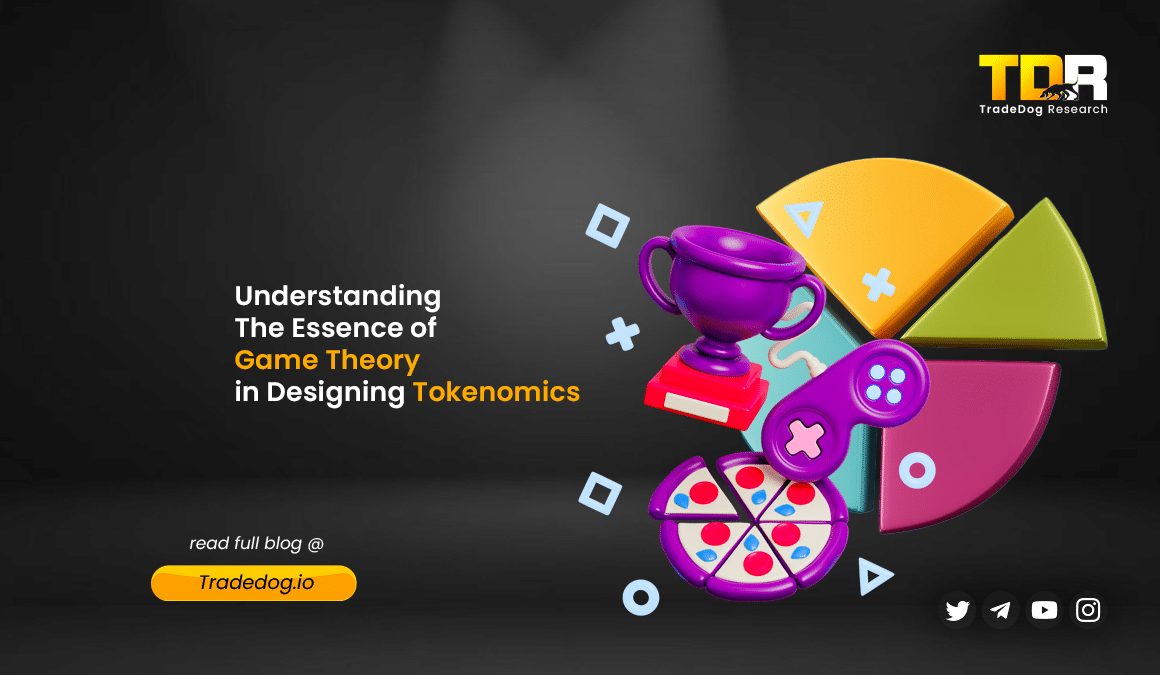Quick Links
The intersection of game theory and tokenomics has become crucial for Web3 and blockchain architecture. Tokenomics refers to the economic model behind a cryptocurrency token, encompassing its creation, distribution, and overall economic incentives. By leveraging game theory – a mathematical framework for analyzing strategic interactions among rational decision-makers – developers can design more robust and resilient token economies. This detailed exploration delves into how game theory can be applied to tokenomics, ensuring sustainable and balanced ecosystems.
What is Game Theory?
Game theory is the study of mathematical models that describe the strategic interactions between rational decision-makers. It is widely used in economics, political science, psychology, and more recently, in blockchain technology. Key concepts in game theory include:
- Players: The decision-makers in the game.
- Strategies: The potential actions each player can take.
- Payoffs: The outcomes of each strategy, often measured in terms of utility or profit.
- Nash Equilibrium: A state where no player can gain by unilaterally changing their strategy, given the strategies of other players.
Game Theory in Tokenomics
Applying game theory to tokenomics involves understanding how participants in a blockchain ecosystem will behave under various rules and incentive structures. This understanding is critical for designing systems that encourage desirable behaviors and discourage malicious activities. Here are some key applications:
1. Incentive Design
One of the primary uses of game theory in tokenomics is to design incentive structures that align the interests of participants with the goals of the ecosystem. For example, in Proof-of-Stake (PoS) networks, validators are rewarded for securing the network. These rewards must be structured to incentivize honest behavior and dissuade malicious actions, such as double-spending attacks.
2. Mechanism Design
Mechanism design, a subset of game theory, involves creating systems (or “games”) that lead to desired outcomes. In tokenomics, this could involve designing a token distribution mechanism that ensures fair and wide distribution, reduces the likelihood of centralization, and incentivizes early adoption and long-term holding.
3. Coordination Problems
Blockchain projects often face coordination problems where optimal outcomes require participants to act in a concerted manner. Game theory helps model these scenarios to devise solutions that can lead to better coordination. For example, decentralized autonomous organizations (DAOs) often use game theory to ensure that token holders can effectively coordinate on governance decisions.
Practical Examples of Game Theory in Tokenomics
Bitcoin’s Proof-of-Work (PoW)
Bitcoin’s PoW consensus mechanism is a classic example of game theory in action. Miners compete to solve cryptographic puzzles, and the first to solve the puzzle gets to add a new block to the blockchain and receive a reward. This system is designed so that the cost of attempting to cheat (e.g., double-spending) outweighs the potential rewards, thereby incentivizing honest behavior.
Liquidity Mining in DeFi
Liquidity mining programs in DeFi platforms like Uniswap and Aave use game theory to incentivize users to provide liquidity. Users stake their tokens in liquidity pools and earn rewards, ensuring liquidity and stability of the platform. This system relies on strategic interactions between liquidity providers, traders, and the platform itself.
Token Staking and Governance
Many blockchain projects implement staking mechanisms where users lock up their tokens to participate in network governance or earn rewards. Projects like Tezos and Cosmos use game theory to ensure that these systems incentivize active and honest participation, aligning individual interests with the goals of the ecosystem.
Designing Tokenomics Using Game Theory
Creating a robust tokenomic model using game theory involves several critical steps:
- Identifying Key Players and Their Incentives: Understanding the different participants in your ecosystem like developers, users, investors, validators and their motivations is the first step.
- Defining Strategies and Payoffs: The next step is to outline the possible actions each player can take and the corresponding rewards or penalties associated with each action. This helps in predicting how players will behave under different scenarios.
- Modeling Interactions and Equilibria: We can then use game theory models to simulate how players will interact under different scenarios and identify Nash equilibria states where players have no incentive to deviate from their strategies.
- Incentive Alignment: Finally, it is important to ensure that the designed incentives align individual participants’ interests with the overall goals of the ecosystem. This usually involves balancing short-term rewards with long-term sustainability.
- Continuous Adaptation and Analysis: Tokenomics is not static. Continuously analyzing player behavior and adapting the incentive structures as the ecosystem evolves to maintain stability and engagement is very important to ensure sustainable tokenomics model.
Challenges and Considerations
While game theory offers powerful tools for designing tokenomics, several challenges remain. Real-world behavior can deviate from theoretical models due to irrational decision-making, information asymmetries, and changing external conditions. Additionally, overly complex incentive structures can lead to unintended consequences and gaming of the system. Therefore, simplicity, transparency, and continuous monitoring are crucial in the practical application of game theory to tokenomics .
Conclusion
Game theory provides a robust framework for understanding and designing the strategic interactions within a tokenized ecosystem. By leveraging game theory, blockchain projects can create more effective, fair, and sustainable tokenomics that drive user engagement, network security, and overall system resilience. By understanding and applying the essence of game theory, developers and analysts can also ensure that their tokenomics not only incentivize participation and growth but also foster a healthy and thriving ecosystem for all stakeholders.









